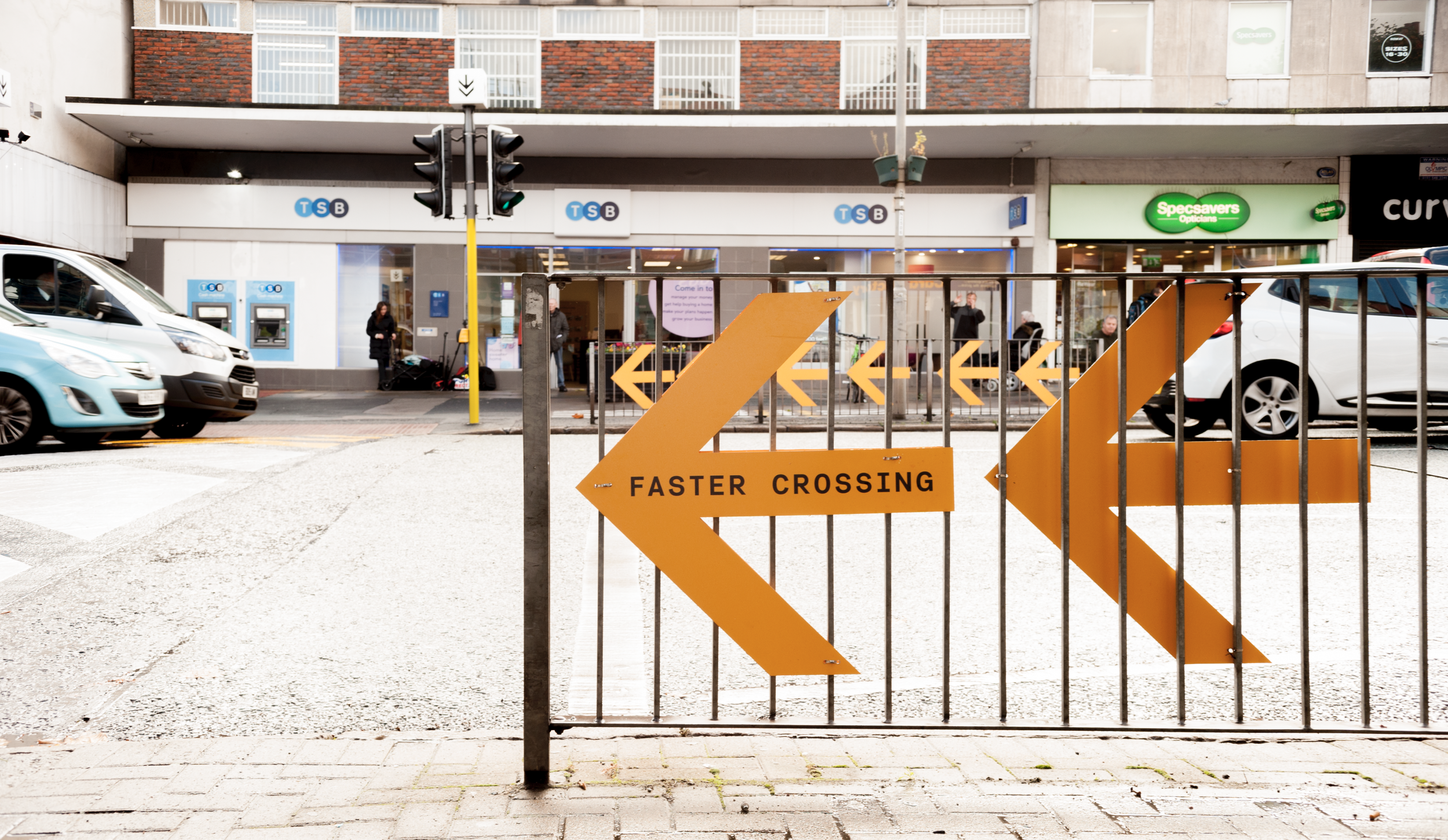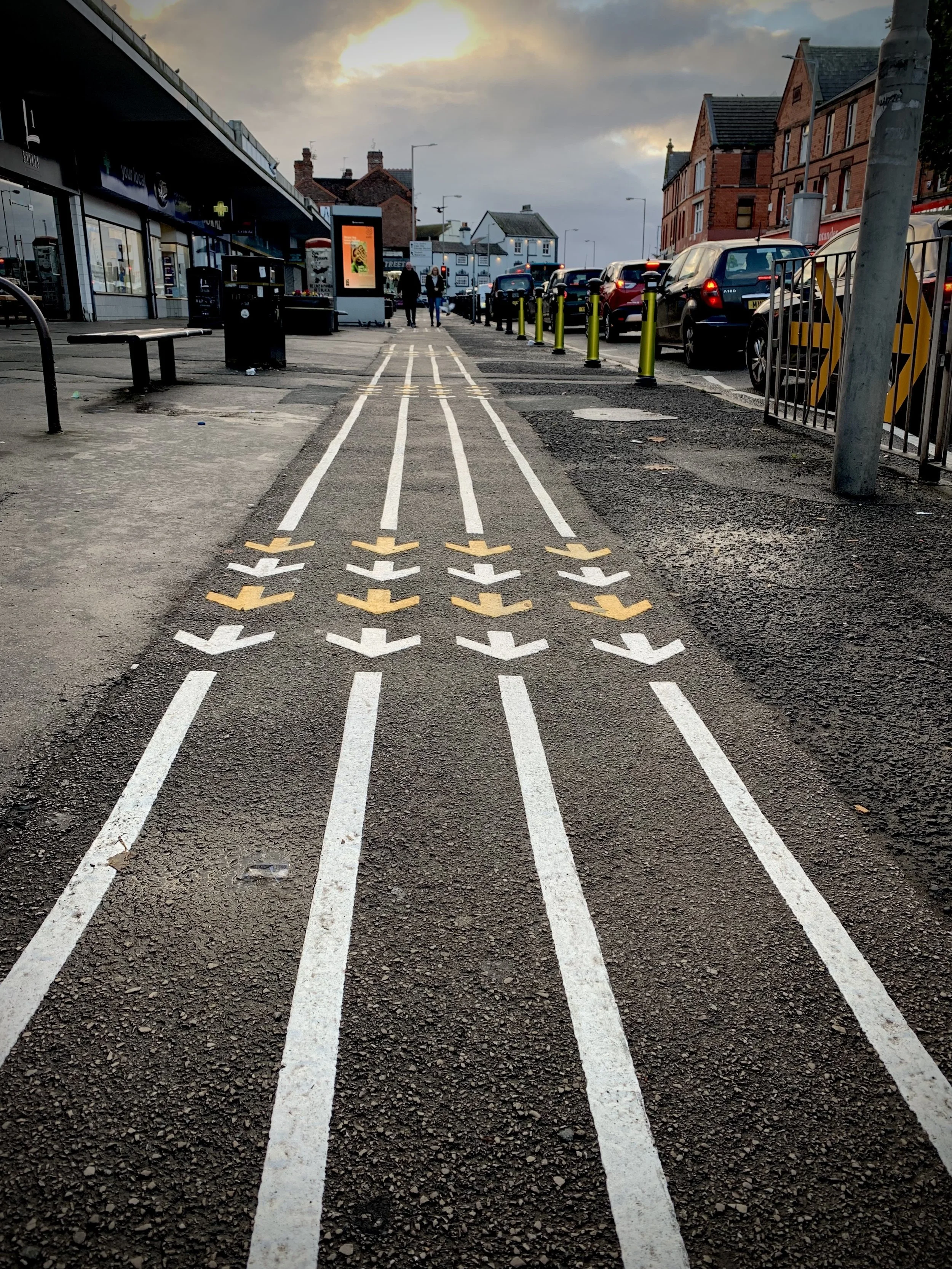Intervention.
When you're aiming to enhance customer engagement, improve employee performance, or drive public health initiatives.
SoMoCo’s intervention design service exists to help you achieve meaningful, lasting behavioural change.
The following case study is a great example of this.
Case Study :
A Nudge in the Right Direction: Enhancing Pedestrian Safety in Liverpool.
Liverpool City Council with financial contribution from the Road Safety Trust.
Summary
Liverpool had the second highest adult pedestrian casualty rate in the UK, and no-one knew why. Faced with the challenge of improving pedestrian safety, SoMoCo went beyond conventional solutions, employing their unique diagnostic approach to uncover the hidden factors influencing unsafe crossing behaviours.
By analysing casualty data, police reports, and conducting on-site observational studies, SoMoCo discovered that pedestrians on local high streets often ignored crossings due to inattentive blindness and a false sense of security on familiar routes.
Armed with these insights, SoMoCo designed and tested subtle visual cues and nudges that made pedestrian crossings more salient and aligned with pedestrians' intrinsic goals of crossing quickly and efficiently.
The intervention, trialled on a high-risk Liverpool high street, led to a significant 14% increase in correct crossing use, with no negative impact on driver behaviour.
This case study highlights the value of SoMoCo’s diagnostic approach, which uncovers unseen factors to drive meaningful and sustainable improvements in public safety, earning recognition for innovation in urban planning.
Context
Liverpool had the second-highest pedestrian casualty rate in the UK, prompting urgent action.
The council needed a solution to improve pedestrian safety effectively and quickly.
Behavioural Analysis
A comprehensive review of casualty data, police fatality reports, and socio-demographic data identified that 22% of all pedestrian casualties occurred within 50 metres of pedestrian crossings. A significant majority occurred on pedestrian high streets, intersected by four lanes of fast-moving traffic. Not using a crossing in such locations seemed counter intuitive.
This data provided the focus for a behavioural intervention.
Observational studies revealed significant underuse of crossings in high-risk areas, despite crossings being located on or near to pedestrian desire lines.
Pedestrians often crossed roads directly by ‘line of sight’ rather than using designated crossings. When asked to recount the last 30 seconds of their journey, few could recall even noticing the crossings. This signalled 'inattentive blindness' or 'selective attention,' where non-essential stimuli are ignored, especially in familiar environments.
Pedestrians registered as casualties often lived nearby, indicating 'path well-travelled bias,' where familiar routes are perceived as safer than they actually are.
We hypothesised that making crossings more salient and aligning their use with the pedestrians' intrinsic goals of crossing quickly and efficiently would increase the rate of pedestrians who walked to and then used the crossing correctly.
Strategy
We decided to create and iteratively test a range of visual cues and nudges that would draw attention to the crossing.
Chevrons and arrows were used to convey a sense of speed and urgency creating the impression that the crossings were the fastest and best way to cross.
Our intervention design also marginally reduced crossing waits times to further reinforce this notion and as an aid to habit formation.
Implementation
Physical visual nudges were installed at the crossing site on a Liverpool high street. A pre and post, quasi-experimental study was used to measure the effect on pedestrian behaviour.
Speed monitoring data was captured to test for any unintended consequences on driver behaviour.
Other possible confounders such as weather were also taken into consideration.
Results & Impact :
Result
14% increase in crossing use within a 30-meter radius
A statistically significant improvement verified through a blinded, pre- and post-intervention trial which analysed over 4,000 crossings. The trial was undertaken by an independent 3rd party.
Result
Exceeded industry standards
Behavioural shifts from nudge-based interventions typically aim for a 5-10% improvement; achieving a 14% increase exceeds expectations.
Result
No unintended consequences
The intervention did not lead to increases in reported collisions, or anti-social behaviour.
Result
No negative impact on traffic flow
Traffic flow and vehicle speeds remained unaffected by the intervention.
Impact
This project showcases how behavioural science can enhance public safety by subtly altering urban environments.
Impact
The Liverpool trial success offers valuable insights for future urban planning and public safety initiatives, proving that meaningful behavioural changes can be achieved unobtrusively and sustainably.
Testimonial :
“Far too many people lose their lives or are seriously injured as pedestrians in Liverpool. It’s a problem we’ve been tackling and have had some success with over the past decade, but we need to be radical to make the progress we all want. I like the fact that these crossings SoMoCo have developed are looking at the whole picture - the environment, the location, behaviour - and am encouraged by the level of work that has gone into their designs, as are the Department of Transport and our colleagues in Hull.”
COUNCILLOR SHARON O‘CONNOR, CABINET MEMBER FOR HIGHWAYS




